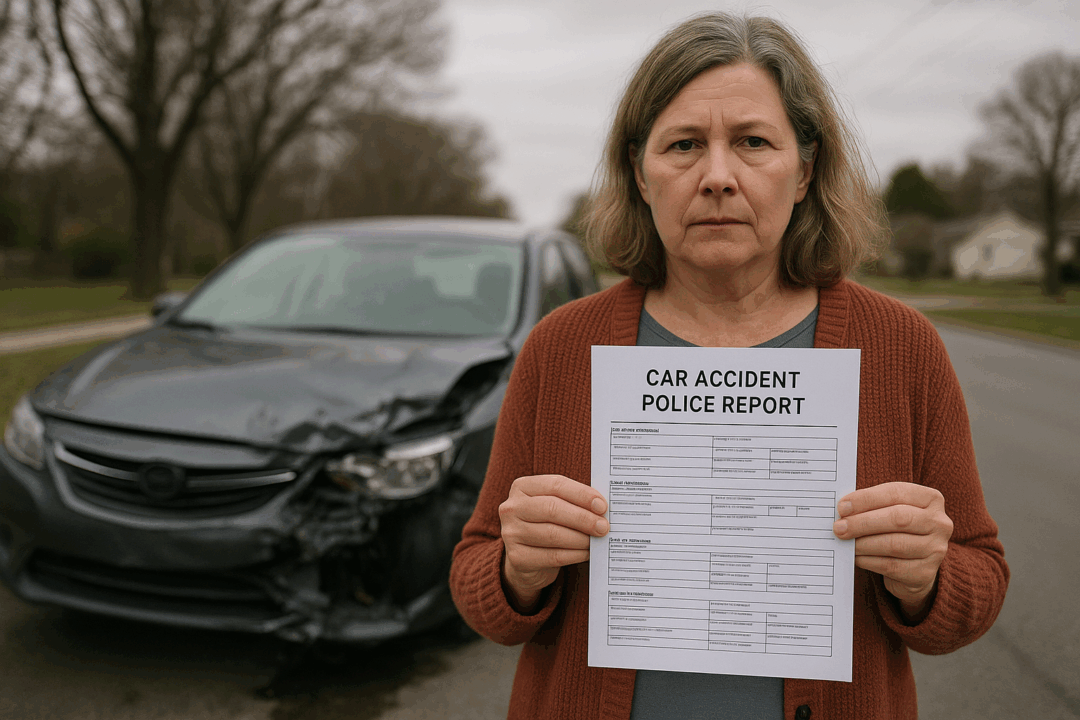Insurance companies are in the business of making money, not looking out for your best interests. Accepting an initial offer from an insurance company could mean losing thousands of dollars in compensation to which you may be entitled. We won’t settle or recommend settling your case until you get the most money possible for your accident or injury, and our track record speaks for itself. Over the last 20 years, we’ve recovered millions of dollars for our clients, and we can help you too. Fill out our free form , and let our dedicated attorneys help you get as much money as possible today.
When a FedEx truck blew through a stop sign and slammed into the passenger side of Mr. T’s vehicle, he...
Truck CrashWhen drivers take unnecessary risks by try to turning left in front of on-coming traffic Unfortunately for Ms. B, she...
Motor Vehicle CrashWhen your dog has a history of aggressive behavior, it’s extremely important to take precautions to keep visitors to your...
Dog BiteWhen a local Home Depot chose not to salt a high foot traffic area in its parking lot, Mrs. M...
Premises LiabilityA property owner’s failure to hire qualified snow removal personnel to ensure the safety of those visiting their Natick strip...
Premises LiabilityThe rideshare company and its driver failed to uphold their duty to provide a safe environment for passengers when it...
Lyft CrashThe rideshare driver neglected its responsibility to ensure safe conditions for its passengers when it caused a crash at the...
Uber CrashThe snow removal company failed to remove hazardous debris (the broken wooden stake) in the parking lot of a popular...
Negligent Snow RemovalThe landlord’s habitual neglect of his Lowell property, despite being publicly identified as one of the worst in the city,...
Icy DrivewayWhen the employee of a well-known international package delivery company failed to pay attention to a stop sign at the...
Car AccidentWhile helping his brother move, our client John B., a prior construction worker and now a recovery minister, fell down...
Premises LiabilityWhen the distracted driver slammed into 75-year old Calvin’s car, it was with such force that it sent him across...
Auto AccidentOn Nov. 14, 2015, a bar patron (the plaintiff’s decedent) engaged in two shot-race contests with a bartender at a...
Overserving Accident/Dram Shop LiabilityA United States Army Recruiter’s lack of attention while driving in Trenton, NJ caused catastrophic injury to a Massachusetts native...
Pedestrian Car AccidentOn January 7, Steve, aged 53, was traveling to work in Brighton when a trolley ran a red light and...
MBTA AccidentOn April 4th Jennifer, aged 38, was on her way to work on Route 495. A tractor trailer was traveling...
Truck AccidentMr. T was minding his own business, sitting in his car parked on the side of the road in Somerville,...
Car AccidentUsing an E Street crosswalk in East Boston wasn’t enough to prevent Joseph, aged 58, a lifelong Bostonian, from being...
Pedestrian AccidentMore than 30% of all nursing homes experience some form of resident abuse. Nearly 1/3 of all nursing homes have...
Nursing Home NeglectMs. A was stopped at a red light at the intersection of Mendon Road and Cass Ave in Woonsocket, Rhode...
Car AccidentDrunk driver proceeding down the wrong way of a highway and struck the plaintiff head-on. The drunk driver was over...
Auto AccidentThe Plaintiff was assaulted by an unauthorized ride share driver. Failure to properly secure the ride share app resulted in unauthorized use and...
Rideshare AccidentIn August, 2021, a 64 Chelsea resident was on his way home from his night custodian job and was traveling...
Auto AccidentIn July 2020, a 60-year-old Malden, MA man was a passenger in a medical transport vehicle. His driver, despite it...
Auto AccidentIn June 2019, a 40-year-old resident of Salem, NH was riding in a vehicle as a passenger of driver on...
Rideshare Driver NegligenceWhen Curtis jumped into a friend’s car to head down to the local restaurant to enjoy some good food and...
Auto AccidentWhen Emma took a plane from Florida to Boston for her son’s engagement party, she expected the trip to be...
Slip And FallIn the early hours of a cold Sunday Morning in March, the C. Family, a family of 5, including 3 children under...
Auto AccidentThe plaintiff, Mr. P, was a customer at a well known multinational retail store, utilizing pharmacy services. When a dirty...
Dangerous ConditionEach year, more than one in four older adults aged 65 and older will fall. Among older Americans, falls are...
Slip and FallIn 2017, Brady’s life was changed forever in a traumatic accident leaving him with a brain injury that resulted in...
Car Accident – PedestrianOn May 26, 2021, Janepher was minding her business as a passenger in a vehicle when the driver began speeding...
Car AccidentOn November 18, 2019, Anastasia was rear ended on Route 24 South while in stop and go traffic due to...
Car AccidentWhen Christina was a passenger on her way home traveling on Gorham Street in Lowell, she didn’t expect that she...
Car AccidentWhen 61 year old David C. was cut off on I95 near Attleboro on September 13, 2015, his Dodge Truck...
Car AccidentDionisia was a passenger in a car traveling on Route 24 in Stoughton when another car sped up to pass...
Car AccidentOur client was employed as an EMS technician when he suffered a disc herniation. The insurance company didn’t want to...
Workers’ CompensationAccording to the Centers for Disease Control and Prevention (CDC), over one million Americans suffer a slip, trip, and fall...
Slip And FallBased on the Fatality Analysis Reporting System (FARS) and National Automotive Sampling System General Estimates System (NASS-GES) data, about 40...
Car AccidentAccording to the Centers for Disease Control and Prevention (CDC), over one million Americans suffer a slip, trip, and fall...
Slip And FallMarie slipped on a wet floor at a nursing home while working as a health aid, causing her to be...
Slip And FallOur client was rear-ended and suffered painful injuries. But because there wasn’t a lot of obvious damage to his car,...
Car AccidentA study from the University of Michigan found that, on average, about 63,000 buses of all types are involved in...
Bus InjuryAfter a Boston nightclub’s security failed to provide a reasonably safe environment to it’s customers, a fight ensued. Mr. H,...
Premises LiabilityOn March 28, 2019, at 11:35 PM, Lisa, aged 50, a resident of Nashua, NH, was traveling straight on Brook...
Car AccidentViolations of the Massachusetts building code directly caused the death of Mr. T. 780 CMR 102.8 states, “All buildings and...
Premises LiabilityAbout 1 million Americans are injured, and 17,000 people die, because of fall injuries every year: according to The Center...
Slip And FallWhen Shawn left his house after the Patriots lost the Superbowl in 2012, he didn’t know his life would change....
Car AccidentConstruction site injuries due to contact with electrical lines are a well-known hazard. Fifty-Four percent (54%) of all fatal electrical...
Unsafe Construction SiteOn September 27th, at approximately 7:13 PM, a 29-year-old resident of New Jersey, entered an establishment north of Boston with...
Negligent Security & Negligent HiringThe plaintiff, Ms. J., was a pedestrian crossing Intervale Street in Brockton, outside of a crosswalk, when she was struck...
Bus Accident





